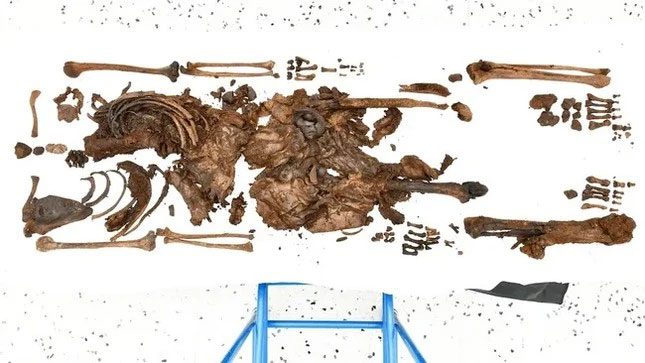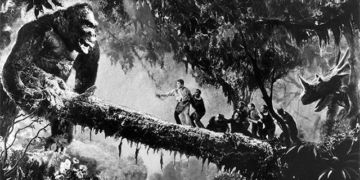Archaeologists have discovered a body in a bog in England dating back 2,000 to 2,500 years.
According to a statement from the Police Service of Northern Ireland, this discovery was made after police were alerted to the finding of human bones in a peatland area near Bellaghy, a village in central Northern Ireland.

Although authorities found most of the skeleton, the skull remains missing. (Photo: Police Service of Northern Ireland).
Nikki Deehan, a detective inspector with the Police Service, stated in a release: “During the initial examination, we could not be sure whether the remains were ancient or the result of a more recent death. Therefore, we proceeded with the excavation of the body with full forensic considerations in a sensitive and professional manner. This approach also ensured that any DNA evidence could be preserved for any potential criminal investigation. Ultimately, the initial speculation turned out to be incorrect.”
Instead, authorities learned that they had found a “bog body,” remarkably well-preserved human remains due to their location in low-oxygen, moist, and spongy soil scattered across the peatland and recently assembled. The body belonged to a teenager who died between the ages of 13 and 17.
While most of the bones of this individual were found, the skull remains missing, and researchers are unsure whether it was separated from the body before or after death.
Bog Bodies
According to a 2023 study published in the journal Antiquity, over 1,000 bog bodies, dating from the Stone Age to modern times, have been discovered across Europe over the centuries. However, it remains unclear how the teenager from Bellaghy met their fate.
Thanks to the excellent preservation qualities of the bog, researchers were able to recover pieces of skin, fingernails, toenails, and possibly even a kidney.
Deehan stated: “Radiocarbon dating has identified the time of death as being between 2,000 and 2,500 years ago, around 500 BC. This is the first time radiocarbon dating has been used on a bog body in Northern Ireland. This is the only surviving bog body, making this a truly unique archaeological discovery in Northern Ireland.”
Authorities are transferring the remains to the National Museum of Northern Ireland for further investigation and to determine how the boy died.




















































